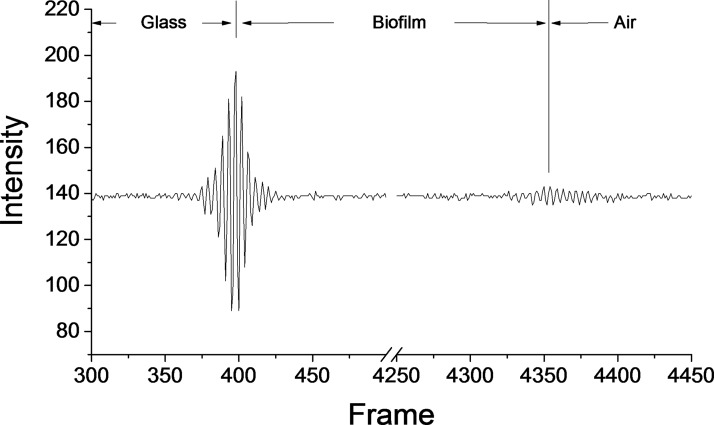FIG. 4.
An example of an interferogram or correlogram from a single pixel. In this example, there are two interference fringe packets. The first is the strong reflection that occurs at the interface between the bottom of the cover glass and the biofilm. The second fringe packet is from the air/water interface at the surface of the biofilm. The thickness of the biofilm can be calculated by comparing the relative positions of the cover glass and biofilm interfaces. The amplitude of interference at the biofilm/air interface is smaller than that of the glass/biofilm interface—likely a result of loss of light through absorption and scattering within the biofilm. Weak signals can be used to accurately determine the Z-position of a surface, though insufficient signal-to-noise in the correlogram results in data dropout (pixels without a determined axial position).

